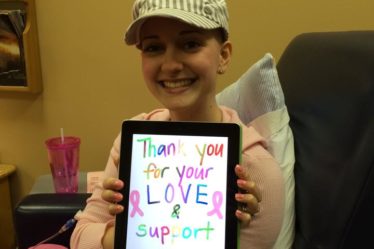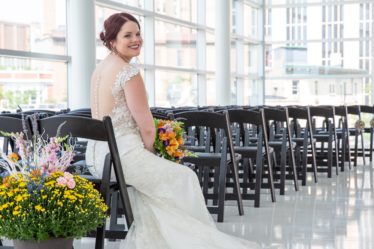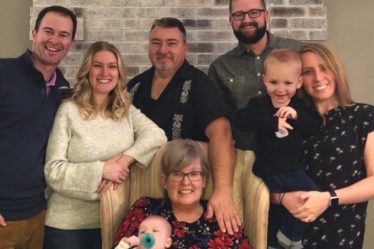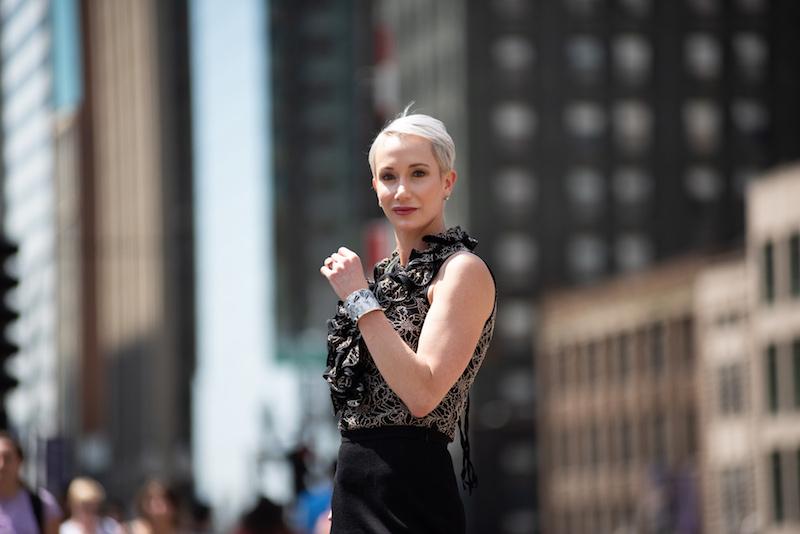
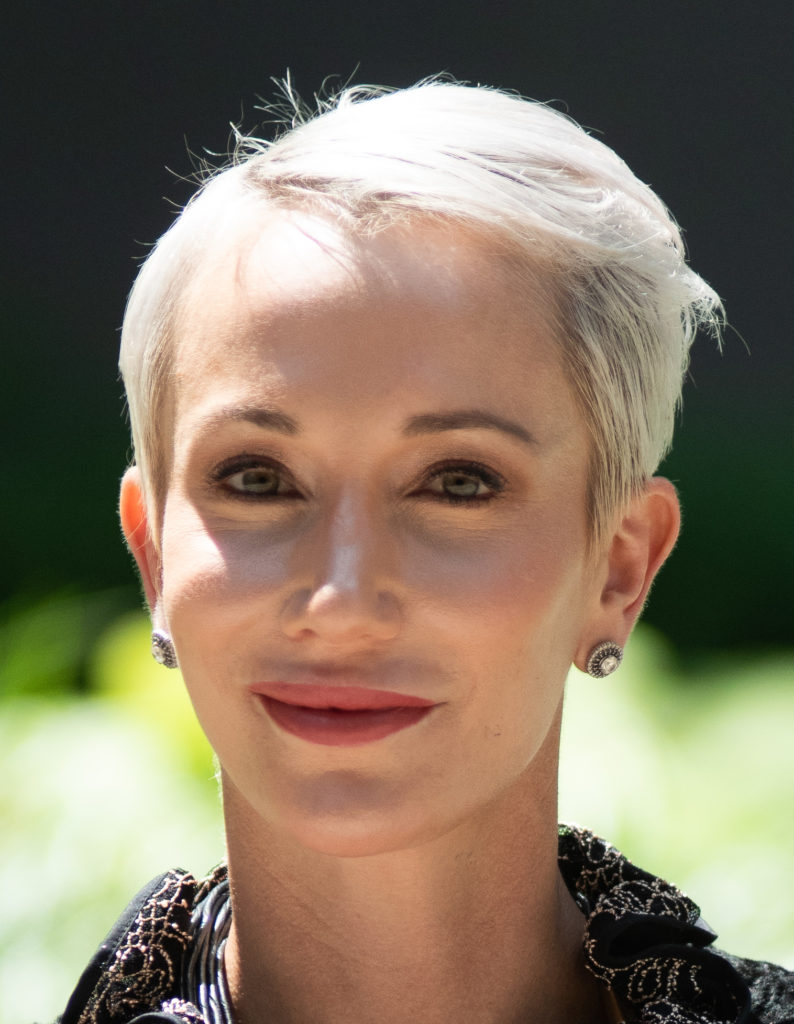
An interview with Caylei Vogelzang, editor-in-chief and founder of Cancer Wellness magazine.
By Jenna Lindman
This week, I am excited to feature a different kind of cancer warrior on our blog, Caylei Vogelzang, editor-in-chief and founder of Cancer Wellness magazine. Caylei and I first met at her office space for Cancer Wellness, which is shared with Vogelzang Law. I heard about her magazine and reached out to her regarding IgniteHope. Caylei invited me into her office and showed me her publication (which is beautiful) and gave me a little background of the formation of the magazine. Her husband, Nick Vogelzang, is a lawyer who advocates for those diagnosed with mesothelioma, a cancer caused by asbestos. Both Caylei and her husband wanted to provide more than just their law services to their clients, but also a way to help those impacted by mesothelioma and their families to connect with other cancer resources to help them. Seeing a need for a comprehensive guide of resources available to cancer fighters, Cancer Wellness magazine was born. Caylei sat down with me for an interview to get to know more about her and her inspiring journey of how Cancer Wellness was formed.
So, Caylei, tell me a little bit about yourself, what you’re up to, and where you’re from.
Sure, I actually grew up in Oregon on an organic herb farm south of Ashland, right on the California border. I grew up in a yurt, which is a Mongolian tent. No plumbing, no electricity, and we raised organic herbs, especially basil. My parents own a company called Rising Sun Farms. The herb farm slowly transformed into a gourmet food manufacturing company. I also grew up on the assembly line putting together different vinaigrettes, pestos, mustard, and the like on packing pallets and doing trade shows down in California. I very much grew up in small business. I grew up working on the farm and was homeschooled until third grade. At that point I was just ready to have a couple of friends, it gets kind of lonely being homeschooled and I was longing for some social interaction.
I went to Ashland, Oregon, for elementary school. I had a fantastic teacher in third grade who followed me into fourth grade, and she was really instrumental in showing me that I should appreciate education in general. Her name is Pam Henningfield. When I was about to go into middle school, I went to a Catholic middle school which was in Medford. We actually ended up moving right up the hill from St. Mary’s school. [My parents’] company was getting bigger, so they needed to move the farm and have a place for the tractor trailers to come in and out of. At 13 or 14, I made the decision to go to boarding school on the East Coast. I think I romanticized boarding school in general; I picked a very classic, 100% boarding [situation]. “Dead Poets Society” was filmed there, it’s called St. Andrews. That’s where I learned how to row, I learned how to write there as well. One would think that I would have known how to write before I got there, but my grammar was apparently atrocious – that [comment] came from the headmaster. He would tutor me in his big office once or twice a week while we were trying to flog our way through Faulkner and the rest of early high school.
I rowed and I was successful, so I was recruited. I ended up going to Columbia University in New York. I had a dream, these romantic visions, of going to an Ivy League school and [it] happened. I rowed through college and of course enjoyed New York. I spent some time after [graduating] school in New York working, but at that point my family’s business had taken off, and they were in need of a field manager to manage East Coast sales. I moved down to South Carolina and [decided] to work for my family’s company. I became the national sales manager, so I was running around and calling Costco and calling on Sam’s Club and a lot of large grocery store chains.
That brings me to meeting my husband Nick. He was based out of Charleston and Chicago. I fell in love, and I decided that Chicago wasn’t such a bad place after all. The law firm was getting off the ground, and his work was always interesting and a little frightening to me. His work was and still is focused on mesothelioma, which is a terrible cancer. The only way one contracts it is exposure to asbestos. So, 14 years later and still being around and in the industry [of mesothelioma], I’ve seen just a lot of clients and a lot of their families. I’ve always had a bit of a marketing background and always felt the call to [be] charitable, I hope everyone does, but I wanted to make sure our firm was focused on families. Unfortunately, by the time our clients come to us they have between a year to a year and a half to live. The families are just rocked, to use a very light term. We really focus on servicing our clients and their families.
That takes us to about three years ago; I was sitting in my home at my kitchen island with one of our employees and we were brainstorming ways we could provide enhanced client services, we came up with the idea of putting together a resource guide for our clients and their families. [Our clients] are a bit lost when they come to us, they are looking for some direction; what do you do, where do you go? So I’d say go to Gilda’s Club, they’re fabulous, the American Cancer Society is great, but it wasn’t very thorough. Based on our experience in the firm, people are looking for more support, and also could use a little bit of a boost. So we decided to take the lifestyle angle and say, so you’re in this situation, it’s terrible, but what can you do? What you can do is you can focus on the good parts of life that we all share, and that includes spending time with one’s family, so how could we facilitate that? It also includes travel, how could we potentially facilitate that? Looking to complementary care, things like yoga, massage, reiki, and some alternatives that would make anyone feel better. We had this idea of focus, and it would be an internal resource guide, maybe ten or so pages, but when we started reaching out to people the story changed quickly. The response was fantastic, we really didn’t expect it. People were saying this is great, there’s nothing like it and you really need to open this to all cancer types because everybody is going through similar emotions and have similar desires to balance themselves in some of the harsh realities and tragedies that fall into the diagnosis.
From running the operations of a law firm, I decided that publishing was my next step, and decided that people were right. The fantastic feedback that we were getting, people were saying we can write for you, asking how can we help. It kind of started itself, in a way, and it continues to self-feed. I get to speak to amazing, amazing people. [The goal] is to be able to connect people with resources, organizations, ideas, or just inspiration to live their best life while going through their cancer journey. Or being around the cancer journey and supporting one. It’s ran from there.
That’s fantastic. So you saw that there was a really good guide missing in the cancer community?
Yeah, there were a couple things that pointed us to it. After people started saying ‘This should really be a magazine,’ I was [thinking], “Oh they’re just being nice and that’s really kind.” But then you hear it from a couple more people. After hearing it a few times I brought it to my husband, Nick, and he said, “Well, honey, you should go and do your homework. I’m sure there’s something out there.” In some ways I kind of hoped that there was, because publishing wasn’t necessarily on the horizon. So I started just Googling and going to bookstores and seeing what was available. What we really found in terms of resources for people going through [this] process were either highly medical, sort of seemed like nurse navigators, or very dense and were focused on doctors, or just seemed that they were full of pharmaceutical ads. To give a magazine that’s full of pharmaceutical ads to our clients and their families when they’re in that space doesn’t seem reasonable to me. I also looked at other community events that are taking place around the Chicagoland area, what I discovered is that there are plenty of events, great charities and people, but there wasn’t a consolidated place to find them. Charities in some ways can become siloed because they have their “people.” If you’re diagnosed with a certain type of cancer, often people will go and find that type of community group. I can absolutely understand why, but there’s so many resources that could be helpful and promoted if people would open themselves up a bit. So I said. ‘Let’s also create a calendar of events for all the cancer events in the Chicagoland area.’ and decided that would be part of it too. So yes, we just found that there weren’t the type of resources focusing on those lifestyle elements that we were interested in, so we had to do it ourselves.

And I’m glad you did because I love the publication. And everyone that I give it to loves it too. Being that you focus on the lifestyle, it feels warm. Thank you for doing that!
We never want to ignore the harshness of cancer, but we also want to make sure that people are doing what they can to feel as best as they can, so we do focus on things like clean beauty, travel. [We focus on] survivors, supporter, and fighter stories, and some of those don’t end well and are tough, but while we’re still alive, we’re still alive, right? I think we always try to balance some of the realities by focusing on some of those stories and hopefully provide different perspectives from different angles from a diverse group of people in order to make everyone feel like they can relate on some level. And if you don’t like one article, hopefully there is another one that you do.
What impact have you seen the publication have on people?
Well, I tell this story quite a bit because it was the first time where I understood the impact, and I feel like I’m going to cry right now. Allison [our social media manager], she’s just fantastic, came to me last year and she said, I have to tell you something. A woman had reached out via Instagram and said she had been a supporter for the last three months of her father who unfortunately passed away. She said the Instagram from Cancer Wellness is what kept her going throughout that time. Sorry, I get a bit choked up over this. I think that that’s what made me imagine just how isolated people can be and how much even the small things that we can do and come up with can really have a positive impact on people. I think from that point on, the mission and the reality of what we were doing and the impact that we could have hit me and stayed with me. Since then it’s been wonderful – the amount of support we’ve received from the community in a variety of ways, I don’t even know how to explain it. I figure if we can even impact a single person in a positive way, that’s great for me. I’m very happy with that result.
I think that’s great, and I think you’re impacting more than one person. I wonder, is there someone that really stands out to you that you’ve encountered in the law firm or someone you featured in the magazine that really stands out as an exceptional cancer warrior?
I feel like there’s so many. I think that Maria Gonzalez-Crespo is probably one of those. She’s actually featured in our current issue. She’s taken it upon herself to create these fantastic scarves that she gives to anyone affected by cancer. She is just outstanding. But it’s really hard to choose. There’s so many great people who have so much compassion and drive. She just had courage and guts and has decided to run with it. But there are just so many. It really is hard to say.
That’s true. That’s really cool that she does that. And she’s in the most recent publication?
Yeah, she is the Thriver in the present issue.
I wonder, how has being so involved in so many journeys of cancer warriors, cancer fighters, and cancer thrivers, changed or impacted you?
I think that it probably touches everything in me and influenced it. I definitely feel I see things differently. I feel very grateful. I grew up in a space where gratitude was heavily emphasized but I don’t think that until I got into the world of mesothelioma that my gratitude for life and for health became realized. My heart just goes out, and I have no choice but to empathize when it’s so close to you. It also leaves me a little bit awestruck and humbled because there’s so many people who are so strong out there and who are doing these amazing things and I wonder if I were in their position, if I would be able to do it myself, you know? And it’s a part of that understanding that I’m able to showcase these resources. These people have just gone to amazing lengths to help others, to educate and inspire. I think that that reveals a really good part of humanity. Sometimes talking about politics or other things that we speak of on a day-to-day basis end up seeming rather superficial.
Thank you so much for your authenticity. I very much appreciate that. I think it’s rare and wonderful. So with the magazine, you’ve had how many editions so far?
Three, we launched [the first] last July and we’re now in a quarterly rotation, so we’ve had two out this year and we’ll have another two coming out.
What can we expect from the magazine going forward?
Well, let’s see. In some way I don’t know, because it’s taken on a life of its own and it’s really is driven by the community, so I imagine that what is happening in medical development and in treatment options are going to be really exciting. I see an intersection of traditional medicine and more holistic complementary care models merging. And I think that is super exciting to increase openness about people’s journeys. I can’t really tell the future, but I know that we need to get healthier as an overall population, and I believe that physically and spiritually we need to track down these nasty chemicals and substances like asbestos, and we need to get rid of them. Glyphosate for example—we are doing a big expose on our next issue for that. Monsanto is Public Enemy Number One in my book, so tracking down what is actually in our environment that’s contributing to a lot of these new and very aggressive cancer types. I’m really excited to try to get to the bottom, or at least approach the bottom, with uncovering organizations and finding great stories [like with] Monsanto that is really inspiring to me. I know it may sound a bit strange, but I feel like we need to expose what is bad and [try] to clean up our environment in general. I don’t think people understand the urgency, but we must focus on what we’re drowning ourselves with and what we’re putting in our bodies.
I agree. So if someone is interested in subscribing to Cancer Wellness how can they go about doing that.
Sure, so you can subscribe online, it’s the easiest way to do it and that will give you access to all of our digital content as well. We have an app that will be released publicly for our fourth issue. It’s a download for all of us that want instant gratification.
That’s fantastic! I didn’t know you guys were launching an app. I’m glad you’re doing that.
Yeah, and if you’re still looking at future plans, one of my hopes and designs for the app is to be able to translate a good amount of our content from each issue into other languages. We have interest from several different countries and Latin America. Having an app and actually being able to provide some ever-growing content and then being able to tap into local resources in the Latin American community will be awesome to spread the same message.
Great! You’ve mentioned cancer hasn’t impacted you directly, but you’ve experienced it through the law office, and we all know people who have gone through cancer, but have you had any direct family members or anyone you had to caregive for?
I’ve had some skin cancer removed and my family on my mother’s side is extremely prone to skin cancer, and I’ve known that for a long time and I’ve tried to be careful. Luckily technology and understanding of the physical sunscreen barriers, etc .have kept me shaded quite a bit more in recent years. But to me mesothelioma has by far been the most impactful. It’s a death sentence and it’s really difficult to explain in words what these people go through when they have this diagnosis. You see someone coming through the door and you’re like, “You don’t [even] seem sick.” [They have a] relatively healthy weight, seemingly strong. And then you see them near the end of the litigation process and they’re on oxygen, in a wheelchair, and that’s it. Seeing that over and over is a game changer.
Absolutely. I can’t even imagine.
It’s also a game changer in terms of my desires to figure out who’s behind it. Because these companies, like Monsanto and all the rest, have known for years—since the turn of the century—that asbestos has respiratory implications and they don’t care. And internal documents many times will say, “Oh, well, we expect some loss of life.” It’s brutal, and it’s brutal profiteering at the expense of human life. That’ll get you fired up if nothing else.
That’s so angering.
I really love being on the plaintiff side and being able to, in my own way, help with those efforts to bring down some of these, or at least take good stabs into [these companies]. The only way within our model of capitalism to get people to pay any attention is financially. Kick them where it hurts. There’s so much social media and access on the internet that some of these issues like asbestos that have been brushed underneath the rug for so long are out in the open and publicly accessible, it’s awesome. If we can change the court of public opinion, we are beginning to win the war.
Wow, thank you so much for everything you do and what your husband does, too.
Thank you so much, I really appreciate it. On both fronts, I am extremely passionate about trying to shed some light on what unfortunately has become a national crisis. And trying to do some[thing] positive, and trying to dig out a silver lining, even if it’s buried pretty deep.
I love that. Caylei, thank you so much for chatting with me today. Do you have any other closing comments before we wrap up?
I would add that my hope is that people will join the conversation in whatever way they would like to or would feel comfortable. Doing so, whether it’s interacting with us and engaging on social media, sending us a pitch, or drawing attention to someone’s amazing efforts they know of or [are] involved in, I would like to know. I’d like to know what’s working and what’s not. What are people thinking and feeling with diagnosis, how people keep their chins up, and how they can share some of that. So join the conversation!
Thank you again for chatting with me today. Everything you are up to with Cancer Wellness and advocating for the cancer community is important and needed! If our readers want to join the conversation, please take a look at the information below.
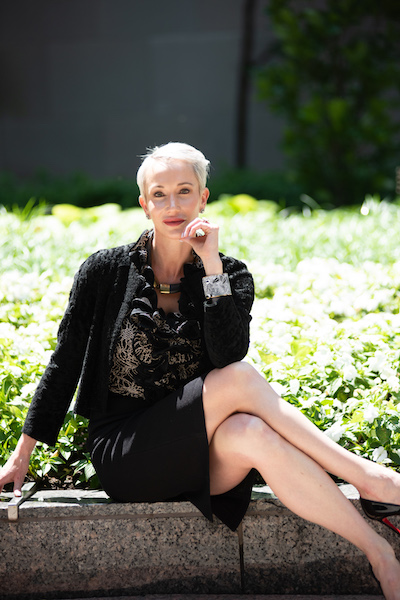
Please check out Cancer Wellness here: CancerWellness.com
You can email Caylei directly at: cvogelzang@cancerwellness.com
Check them out on Instagram! @cancerwellnessmag

